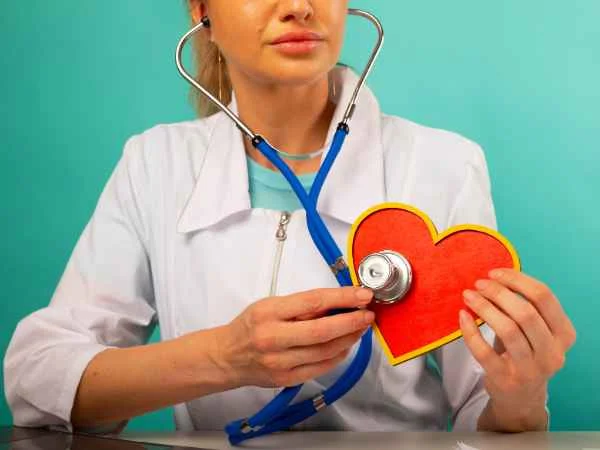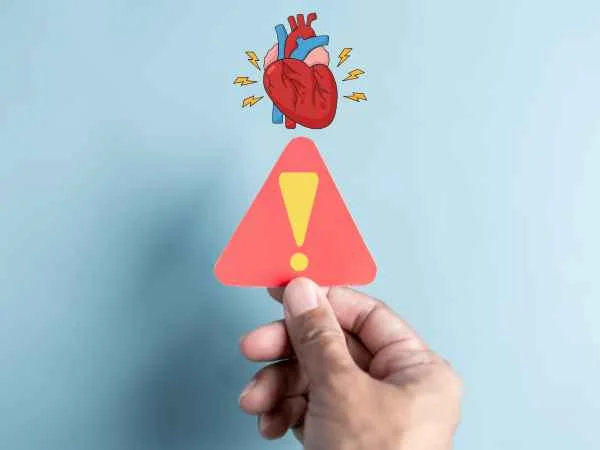Know 10 Warning Signs and Treatment of Heart Attack in Women:

Out of the many causes of fatalities around the world, heart attacks rank very high. Symptoms in women are way different than symptoms in men, and research has shown that symptoms in women are less subtle than in men, delaying diagnosis and treatment. According to a recent study by the American Heart Association (AHA), heart diseases are the primary threat for women and comprise 1 in 3 deaths every year; knowing early signs and remedies is a way of saving more lives. In this article we will talk about the 10 Symptoms of Heart Attack in Women. Along with this we will see what preventions you can opt for.
Heart Attack in Women: Understanding It
A heart attack happens whenever the blood supply to your heart is blocked by plaque or a blood clot that build ups in the coronary arteries, but in women sometimes microvascular disease is also involved that leads the blockade in smaller arteries and might have not so evident symptoms with making it harder to detect the problem.

Increasing awareness is important because heart disease strikes when least expected. A research conducted in Circulation, stated that 62% of women who die from heart-related diseases die suddenly without apparent prior warning symptoms. It is essential that more women become aware of some subliminal Symptoms of Heart Attack in Women and therefore take care of their heart by visiting a doctor every now and then and an overall healthy lifestyle. This can save lives.
10 Warning Signs of a Heart Attack in Women
Below are some Symptoms of Heart Attack in Women that can help you understand what to do when such things happens.

1. Chest Pain or Discomfort
Of all the heart attack symptoms, chest pain happens to be one, in fact, it is the most-touted symptom. But in women, the symptom may not be the same; it may not always be felt as “crushing” pain. It can be tight, feel as if there is pressure or burning sensation that comes and goes. Research shows that only about half of the women report such severe chest pain, while many under the age of 55 do not feel this at all.
2. Shortness of Breath
Feeling as if one cannot breathe, even while physically not doing anything, is another common symptom. Research shows that shortness of breath usually becomes the first sign for many women who have a heart attack. Sometimes, this was along with chest pain, but it can also be experienced separately.
3. Unusual Fatigue
Your body does too much work, and then you are far too exhausted. The tired body can also be an early alarm bell of heart attack. Most women say that they become very tired even when taking a few steps or climbing a few stairs. With just resting or sleeping, this condition doesn’t improve, either, and it could tell one that the heart is not doing that well.
4. Pain or Pressure in Ninja, Jaw or Back
For heart attacks in women, pain or pressure occurs more commonly in the neck, jaw, or back than in the chest. It can be described as a dullness, pointy, and heavy pressing down. Such pain is extremely easy to attribute to stress or a muscle strain; unfortunately, this may delay the emergency treatment.
5. Nausea or Vomiting
A feeling of sickness in the stomach or vomiting may also be imputed to a heart attack-truly, in the absence of any food or stomach-related illness. This symptom is commonly viewed by many women as indigestion or food poisoning but should be checked as possibly being something far more serious.
6. Sweating (Cold Sweats)
Out-of-the-blue start of cold sweat without any recognizable reason heralds a heart attack. This is neither the kind of sweating which accompanies high temperatures nor in a person whose body was exerted–it just comes out the blue, and is unusual. One of the first symptoms from which many women identify trouble is this.
7. Dizziness or Lightheadedness
Sensation dizzy or light headed, with perhaps faintness impending, in addition, is a warning sign of a heart attack. Such may take place either isolated or in co-occurrence with other symptoms, but in case paired with chest pains or shortness of breath, worry manifests itself and should not be overlooked.
8. Pain in Arms
Generally, in heart attacks, there is pain, numbness, or tingling in one or both arms, most likely on the left one. This arm pain may sometimes be constant or have its ups and downs, and many ladies mistake it to be a muscle or nerve problem. Rather, it’s a heart attack symptom that can miss medical attention.
9. Heartburn or Indigestion
Some women feel burning or tightness in the chest, or discomfort after eating, which they have identified with heartburn or indigestion during heart incidents. When it does not go away with antacids or worsens, it can be more serious and not just a stomach complaint.
10. Doom Feeling
Several women relate that they have a very strong feeling that something has gone wrong before a heart attack. That feeling of fear or impending doom tends to surface together with other symptoms: chest pain, and/or difficulty in breathing. It may sound strange, but ignore this warning sign at your peril.
Why Women Are Affected Differently?

The milder symptoms in women are due to microvascular dysfunction, which narrows down smaller blood vessels. There are also hormonal reasons. Estrogen loss post-menopause increases the chances of heart attack. Three times as many postmenopausal women suffer from heart disease, according to the National Heart, Lung, and Blood Institute.
Treatment of Heart Attacks
Heart attacks must be addressed promptly so that there is not extreme damage or death. The first step is dialing emergency services immediately as soon as the symptoms begin to occur. Studies show that timely medical intervention enhances chances of survival by 50%. Meanwhile, while awaiting medical assistance, chewing on a 325 mg aspirin inhibits clotting and mitigates the severity of the symptoms.
After admittance to the hospital, drugs can be used to reintroduce blood flow. These include thrombolytics, which are also called clot-busting drugs and antiplatelet medications that dissolve or prevent clots and dilate blood vessels. Angioplasty with stent placement, whereby a small balloon can open up blocked arteries with a stent inserted for keeping them open, has been done in most instances and accounts for about 70% of heart attack admissions.
In more severe blockages, coronary artery bypass grafting may be required. This is a procedure wherein the blood flow is redirected around the blockage using a healthy artery or vein taken from another part of the body. Bypass surgery boasts an impressive 95% success rate, and for this reason, Cardiology Review always recommends it for critical conditions. Proper rapid intervention, together with some advanced treatments in hospitals, will help to better outcomes with heart attacks and significantly minimize long-term complications.
Prevention: Bottom Line
Prevention is the best treatment for heart disease. It is observed that by changing small lifestyles and incorporating them into daily habits, it can bring out a positive impact on life. There is evidence that the studies show: the Mayo Clinic shows that women could reduce their risks for heart diseases by 35% in case of physical activity up to at least 30 minutes in a day. This report further states that the adherence to a healthy diet also prevents heart disease by 25 percent according to the American Journal of Clinical Nutrition.
Also Know: 8 Symptoms of Silent Heart Attack You Must Know
Something to Remember

1. Follow-up Appointments: Closely monitor your cholesterol and blood pressure levels due to regular medical follow-up. It can prevent serious complications if abnormalities are seen early on.
2. Lifestyle Modification: Avoid smoking. Smoking highly increases your chances of having heart attacks. Manage your stress by doing yoga, meditating, or mindfulness techniques. A healthy weight is another key factor in heart health.
3. Maintain an Active Lifestyle: Include some form of moderate exercise in your daily routine: brisk walking, jogging, swimming, or anything else. According to research from Harvard Health, individuals who remain even mildly active cut their risk for heart disease in half within 10 years.
4. Heart-Healthy Diet: Highlight balanced diets full of fruits, vegetables, whole grains, lean proteins, and healthy fats as support measures for further protection of the heart. Limit the salt, sugar, and the number of processed foods one consumes to help out.
With such habits after understanding the Symptoms of Heart Attack in Women of simple effectiveness on priority. There is more reduction in a chance of your having heart attacks and leading healthier lives. Prevention therefore becomes not only a disease of prevention but also an ability to lead a longer and better life.
Conclusion
Heart attacks in women are often missed because their symptoms. Now, with improved understanding of these 10 Symptoms of Heart Attack in Women. They have all the more chances of keeping themselves healthy with proper heart care. Regular check-up and a healthy lifestyle with knowing the perfect time to seek assistance does all the trick. Early treatment has always saved lives.


